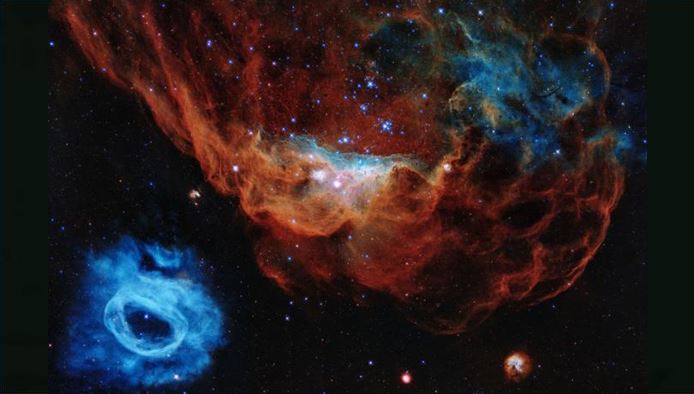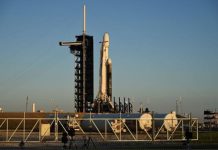
April 24 (UPI) — NASA released a new image of two colorful, neighboring nebula Friday to mark the 30th anniversary of the launch of the Hubble Space Telescope.
The twin objects, part of the Large Magellanic Cloud, a satellite galaxy of the Milky Way, are about 163,000 light-years away from Earth. Astronomers nicknamed the colorful red-and-blue image the “Cosmic Reef,” a nod to its similarity to undersea life.
NASA launched the Hubble into space from the Kennedy Space Center in Cape Canaveral, Fla., on April 24, 1990. The 12-ton space telescope, then the most expensive satellite ever built, was meant to be a vital research tool for astronomers seeking to see deep into space and discover key details about the origins of the universe.
Hubble snapped its first image less than a month after its launch, that of an ancient star cluster. Elated scientists said those first images were two to three times sharper than expected.
Over its three decades of use, NASA and the European Space Agency were able to narrow its estimation for the age of the universe (13.7 billion years), determine the expansion rate of the universe, predict and watch the same supernova explode twice, observe the aftermath of a comet’s collision with Jupiter, and discover a fifth moon orbiting Pluto.
“Hubble has given us stunning insights about the universe, from nearby planets to the farthest galaxies we have seen so far,” said Thomas Zurbuchen, associate administrator for science at NASA headquarters in Washington, D.C. “It was revolutionary to launch such a large telescope 30 years ago, and this astronomy powerhouse is still delivering revolutionary science today. Its spectacular images have captured the imagination for decades, and will continue to inspire humanity for years to come.”
The telescope has made 1.4 million observations in 30 years, resulting in more than 17,000 peer-reviewed scientific publications. NASA described it as the “most prolific space observatory in history,” and while it soon won’t be the most technologically advanced telescope in space now, astronomers plan to keep it in use as long as it produces useful results.
NASA plans to launch the James Webb Space Telescope, which will be able to see deeper into space, in 2021.





